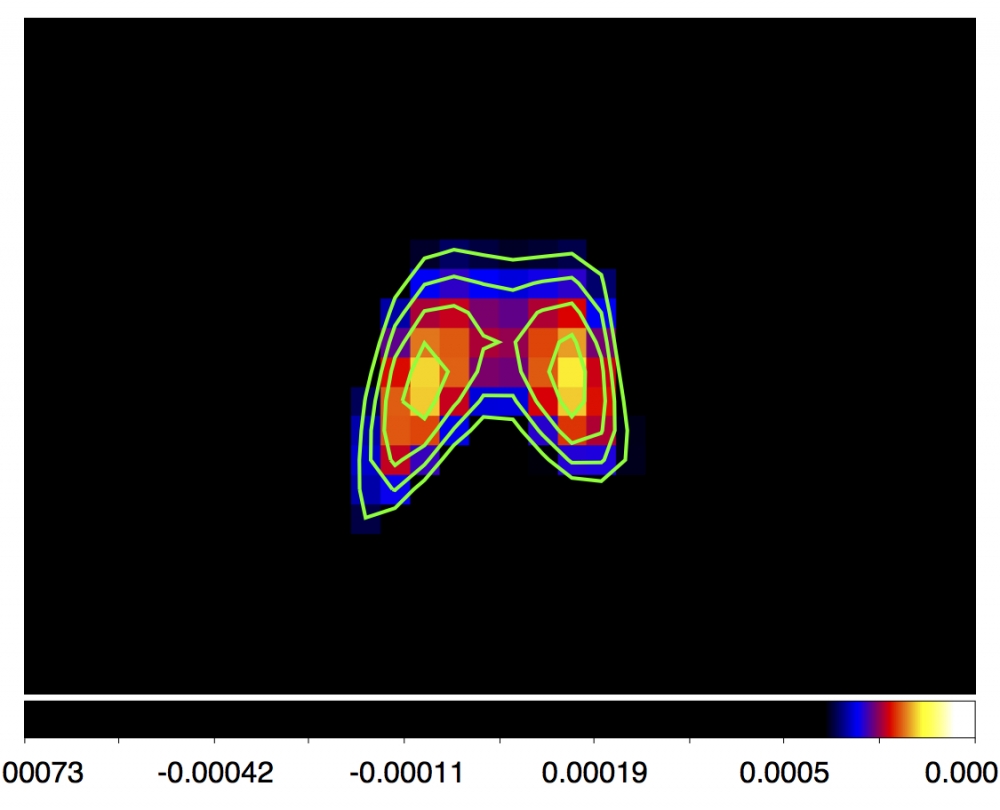When radio galaxies collide, supermassive black holes form tightly bound pairs

The two compact radio sources separated by less than a light year at the center of the galaxyNGC7674. The two sources correspond to the location of the two active supermassive blackholes which form a binary and orbit around each other. Credit: TIFR-NCRA and RIT, USA
September 18, 2017 by Susan Gawlowicz
A study using multiple radio telescopes confirms that supermassive black holes found in the centers of galaxies can form gravitationally bound pairs when galaxies merge.
The paper published in the Sept. 18 issue of Nature Astronomy sheds light on a class of black holes having a mass upwards of one million times the mass of the sun. Supermassive black holes are expected to form tightly bound pairs following the merger of two galaxies.
"The dual black hole we found has the smallest separation of any so far detected through direct imaging," said David Merritt, professor of physics at Rochester Institute of Technology, a co-author on the paper.
See full text